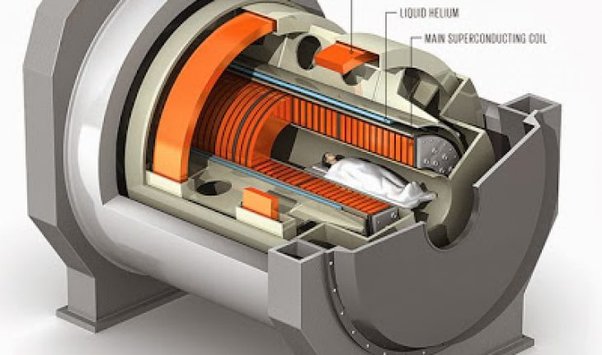Unveiling the Mysteries: The Continuous Operation of MRI Machines and its Technological Significance

Introduction:
Magnetic Resonance Imaging (MRI) has revolutionized the field of medical diagnostics, offering unparalleled insights into the human body without the need for invasive procedures. One intriguing aspect that sparks curiosity among many is the fact that MRI machines are never turned off. This continuous operation is not a quirk but a crucial element of the technology’s functionality. In this comprehensive exploration, we delve into the reasons why MRI machines are never turned off, understanding the underlying principles, the impact of shutdowns, and the technological significance that keeps these machines humming around the clock.
Section 1: The Basics of MRI Technology
1.1 Magnetic Fields and Radiofrequency Pulses:
MRI relies on strong magnetic fields and radiofrequency pulses to generate detailed images of internal body structures. The main magnet in an MRI machine produces a powerful, constant magnetic field, typically measured in Tesla units.
1.2 Alignment of Hydrogen Atoms:
The human body, primarily composed of water-containing hydrogen atoms, aligns with the magnetic field when exposed to it. Radiofrequency pulses are then used to temporarily disrupt this alignment.
1.3 Signal Generation:
As the hydrogen atoms return to their aligned state, they emit signals that are detected by the MRI machine’s receiver coils. These signals are translated into detailed images by advanced computer algorithms.
Section 2: The Importance of a Stable Magnetic Field
2.1 Maintaining Calibration:
The magnetic field strength is crucial for the accuracy and consistency of MRI images. Turning off the MRI machine would result in the loss of calibration, requiring a time-consuming and intricate recalibration process before it can be used again.
2.2 Alignment Stability:
Continuous operation ensures the stability of the magnetic field’s alignment. Sudden changes in the magnetic field, such as those caused by turning off the machine, can lead to inconsistencies and distortions in imaging.
2.3 Patient Safety:
The stability of the magnetic field is paramount for patient safety. Abrupt changes in the magnetic field can cause discomfort, disorientation, and even adverse effects for patients with certain medical conditions or implanted devices.
Section 3: Energy Consumption and Cost Efficiency
3.1 Power Consumption:
MRI machines consume a substantial amount of power, especially during the initial ramp-up to establish the strong magnetic field. Keeping the machine running at a consistent level is more energy-efficient than frequently turning it on and off.
3.2 Warm-Up Time:
MRI machines have a warm-up time during which they stabilize the magnetic field. Constant operation eliminates the need for frequent warm-up cycles, optimizing energy consumption and enhancing overall efficiency.
3.3 Cost Considerations:
Frequent shutdowns and restarts not only consume more energy but also contribute to wear and tear on the machine’s components. Maintaining continuous operation minimizes the need for costly repairs and ensures a more cost-effective utilization of the equipment.
Section 4: Impact of Shutdowns on MRI Machines
4.1 Time-Consuming Recalibration:
Turning off an MRI machine necessitates recalibration, a meticulous process that involves adjusting the magnetic field strength and ensuring its uniformity. Recalibration takes time and requires the expertise of qualified technicians.
4.2 Reduced Lifespan:
Frequent shutdowns and restarts can contribute to the wear and tear of various components within the MRI machine, potentially reducing its overall lifespan. Continuous operation, with proper maintenance, helps maximize the longevity of the equipment.
4.3 Workflow Disruption:
Shutdowns disrupt the workflow of healthcare facilities. Continuous operation ensures that MRI machines are ready for use, streamlining patient scheduling and reducing delays in diagnostic procedures.
Section 5: Technological Significance of Continuous Operation
5.1 Research and Development:
MRI technology continues to advance, with ongoing research and development aimed at improving image quality, reducing scan times, and expanding the range of applications. Continuous operation facilitates research efforts and the implementation of technological advancements.
5.2 Emergent Situations:
In emergency situations where immediate diagnostic imaging is crucial, the ability to swiftly use an MRI machine without the delay of a warm-up or recalibration process can be a life-saving advantage.
5.3 Remote Monitoring and Maintenance:
Continuous operation enables remote monitoring and maintenance of MRI machines. Technological advancements allow for real-time diagnostics, proactive troubleshooting, and timely intervention to address potential issues.
Conclusion:
The continuous operation of MRI machines is not a mere logistical choice but a fundamental requirement driven by the intricacies of the technology. The stability of the magnetic field, the need for consistent calibration, and considerations of energy efficiency and cost-effectiveness underscore the importance of maintaining a continuous workflow. Beyond these practical considerations, the technological significance of continuous operation lies in its support of ongoing research, emergent medical situations, and the seamless integration of advancements that propel MRI technology into the future. As we continue to unlock the mysteries of the human body through the lens of magnetic resonance imaging, the constant hum of these machines serves as a testament to the relentless pursuit of knowledge and innovation in the realm of medical diagnostics.




